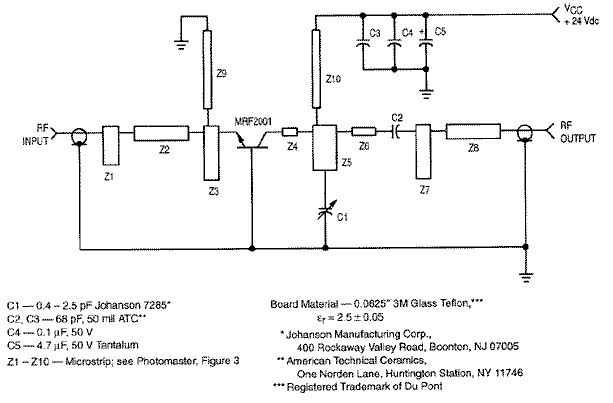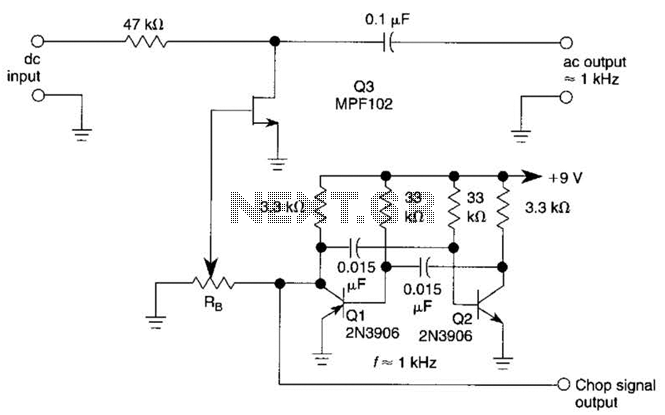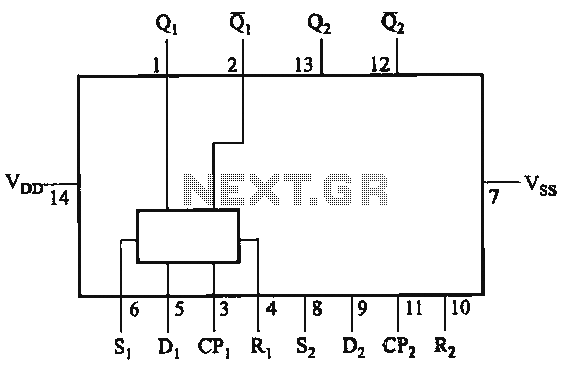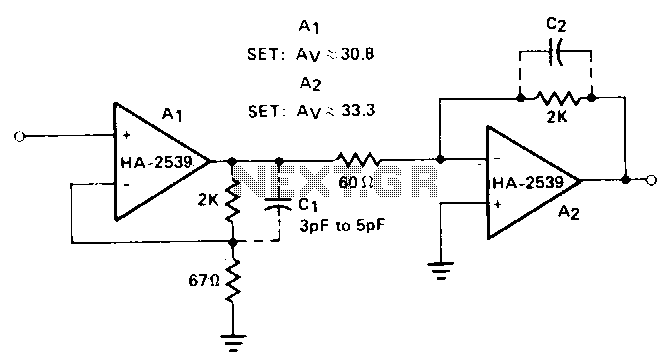
power amplifier class circuit
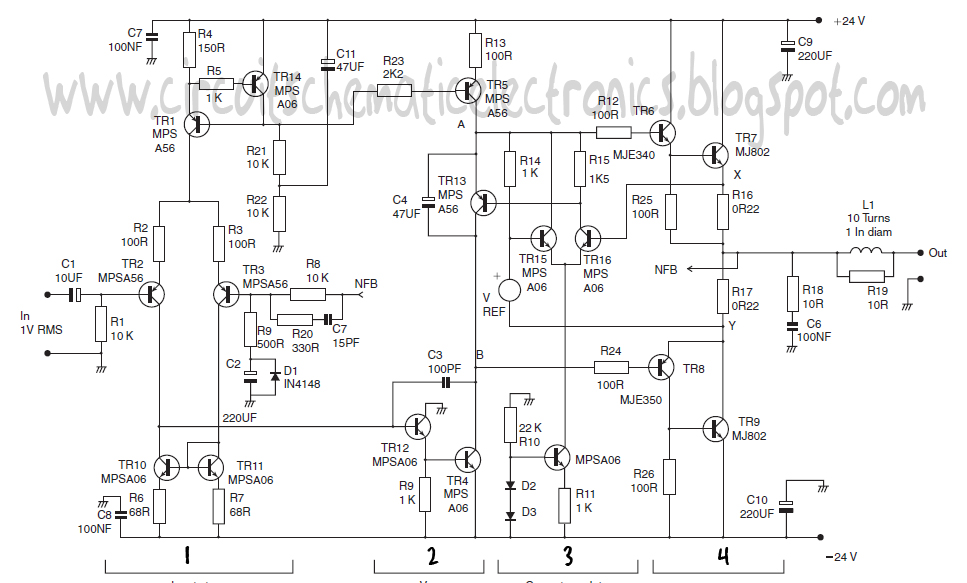
This design schematic represents a Class A power amplifier. It closely matches the operating parameters of Class B to facilitate comparison, particularly with a negative feedback (NFB) factor of 30dB at 20 kHz. The front end is similar to that of a Class B amplifier, utilizing a standard quasi output stage, which can be replaced by a complementary feedback pair (CFP) stage without issues. In both configurations, distortion levels are extremely low; however, the CFP configuration demonstrates even better performance than the quasi output, confirming simulation results for isolated output stages. Class A amplifiers are considered the highest class compared to others, which range from Class AB to Class S. In a Class A amplifier, current flows continuously through all output devices, thereby avoiding the nonlinearities associated with turning them on and off. There are two distinct types of Class A amplifiers, though this distinction is not always explicitly stated, as they operate in very different ways. The first type resembles a Class B stage, consisting of two emitter-followers working back to back, with an increased bias voltage to ensure sufficient current flows so that neither device turns off under normal loading conditions. The primary advantage of this approach is that the amplifier cannot abruptly run out of output current; if the load impedance drops below specified levels, the amplifier may briefly operate in Class AB, resulting in a modest increase in distortion without significant audible distress. The operation of current regulators TR13, TR15, and TR16 has been previously described. The reference used is a National LM385/1.2, which has a fixed output voltage of 1.233 V nominal, reduced to approximately 0.6V by a 1k-1k voltage divider. The circuit is noted for its loud output, minimal speaker vibration, smooth sound quality, and low noise levels.
The Class A power amplifier schematic is designed to provide high-fidelity audio amplification, making it suitable for high-end audio applications. The continuous current flow in the output devices minimizes crossover distortion, a common issue in Class B amplifiers. The use of a quasi output stage allows for a simpler design while maintaining low distortion characteristics.
In this circuit, the negative feedback loop plays a crucial role in maintaining stability and linearity across the amplifier's operating range. The 30dB NFB factor at 20 kHz implies that the amplifier is capable of maintaining a consistent gain while effectively reducing distortion and improving frequency response. The feedback network is likely composed of resistors and capacitors that tailor the frequency response to ensure that the amplifier performs well across the audio spectrum.
The choice of a CFP stage as an alternative to the quasi output stage can further enhance performance. The CFP configuration provides better thermal stability and allows for higher current gain, which can be beneficial in driving low-impedance loads without compromising sound quality.
The implementation of the LM385 reference voltage regulator ensures that the biasing of the output stage remains stable, which is essential for consistent performance. The voltage divider that reduces the reference voltage is critical in setting the appropriate bias current for the output devices, allowing them to operate in the desired Class A mode.
Overall, this Class A power amplifier design exemplifies a balance between performance and complexity, making it a suitable choice for audiophiles seeking high-quality sound reproduction. The attention to detail in the circuit design, particularly in the output stage and feedback mechanism, contributes to its ability to deliver clear, distortion-free audio signals.This is a design schematic Class A power amplifier. This is a close as possible in operating parameter the Under Classes is class B, to aid comparison ; in particular the NFB factor remains 30dB at 20 kHz. The front end is similiar to class B amplifier. This circuit uses a standart quasi output. This may be replaced by a CFP stage without proble ms. In both cases the distortion is extremely low, but gratifyingly the CFP proves even better than quasi, confirming the simulation results for output stages in isolation. About Class-A amplifier, in this class is the highest class from another class. Classes below begin from AB to Class S. In a Class-A amplifi er current fl ows continuously in all the output devices, which enables the nonlinearities of turning them on and off to be avoided.
They come in two rather different kinds, although this is rarely explicitly stated, which work in very different ways. The fi rst kind is simply a Class-B stage (i. e. two emitter-followers working back to back) with the bias voltage increased so that suffi cient current fl ows for neither device to cut off under normal loading.
The great advantage of this approach is that it cannot abruptly run out of output current; if the load impedance becomes lower than specifi ed then the amplifi er simply takes brief excursions into Class-AB, hopefully with a modest increase in distortion and no seriously audible distress. The operation of current regulator TR13, TR15, TR 16 has already been described. The reference used is a National LM385/1. 2 Its output voltage is fixed at 1. 233 V nominal ; this is reduced approximately 0. 6V by 1k - 1k divider. The circuit is the best for me, because is loudly, and does not vibrate the speakers leaves, softly sound, and low noise.
And i like it. , . , :) 🔗 External reference
The Class A power amplifier schematic is designed to provide high-fidelity audio amplification, making it suitable for high-end audio applications. The continuous current flow in the output devices minimizes crossover distortion, a common issue in Class B amplifiers. The use of a quasi output stage allows for a simpler design while maintaining low distortion characteristics.
In this circuit, the negative feedback loop plays a crucial role in maintaining stability and linearity across the amplifier's operating range. The 30dB NFB factor at 20 kHz implies that the amplifier is capable of maintaining a consistent gain while effectively reducing distortion and improving frequency response. The feedback network is likely composed of resistors and capacitors that tailor the frequency response to ensure that the amplifier performs well across the audio spectrum.
The choice of a CFP stage as an alternative to the quasi output stage can further enhance performance. The CFP configuration provides better thermal stability and allows for higher current gain, which can be beneficial in driving low-impedance loads without compromising sound quality.
The implementation of the LM385 reference voltage regulator ensures that the biasing of the output stage remains stable, which is essential for consistent performance. The voltage divider that reduces the reference voltage is critical in setting the appropriate bias current for the output devices, allowing them to operate in the desired Class A mode.
Overall, this Class A power amplifier design exemplifies a balance between performance and complexity, making it a suitable choice for audiophiles seeking high-quality sound reproduction. The attention to detail in the circuit design, particularly in the output stage and feedback mechanism, contributes to its ability to deliver clear, distortion-free audio signals.This is a design schematic Class A power amplifier. This is a close as possible in operating parameter the Under Classes is class B, to aid comparison ; in particular the NFB factor remains 30dB at 20 kHz. The front end is similiar to class B amplifier. This circuit uses a standart quasi output. This may be replaced by a CFP stage without proble ms. In both cases the distortion is extremely low, but gratifyingly the CFP proves even better than quasi, confirming the simulation results for output stages in isolation. About Class-A amplifier, in this class is the highest class from another class. Classes below begin from AB to Class S. In a Class-A amplifi er current fl ows continuously in all the output devices, which enables the nonlinearities of turning them on and off to be avoided.
They come in two rather different kinds, although this is rarely explicitly stated, which work in very different ways. The fi rst kind is simply a Class-B stage (i. e. two emitter-followers working back to back) with the bias voltage increased so that suffi cient current fl ows for neither device to cut off under normal loading.
The great advantage of this approach is that it cannot abruptly run out of output current; if the load impedance becomes lower than specifi ed then the amplifi er simply takes brief excursions into Class-AB, hopefully with a modest increase in distortion and no seriously audible distress. The operation of current regulator TR13, TR15, TR 16 has already been described. The reference used is a National LM385/1. 2 Its output voltage is fixed at 1. 233 V nominal ; this is reduced approximately 0. 6V by 1k - 1k divider. The circuit is the best for me, because is loudly, and does not vibrate the speakers leaves, softly sound, and low noise.
And i like it. , . , :) 🔗 External reference

